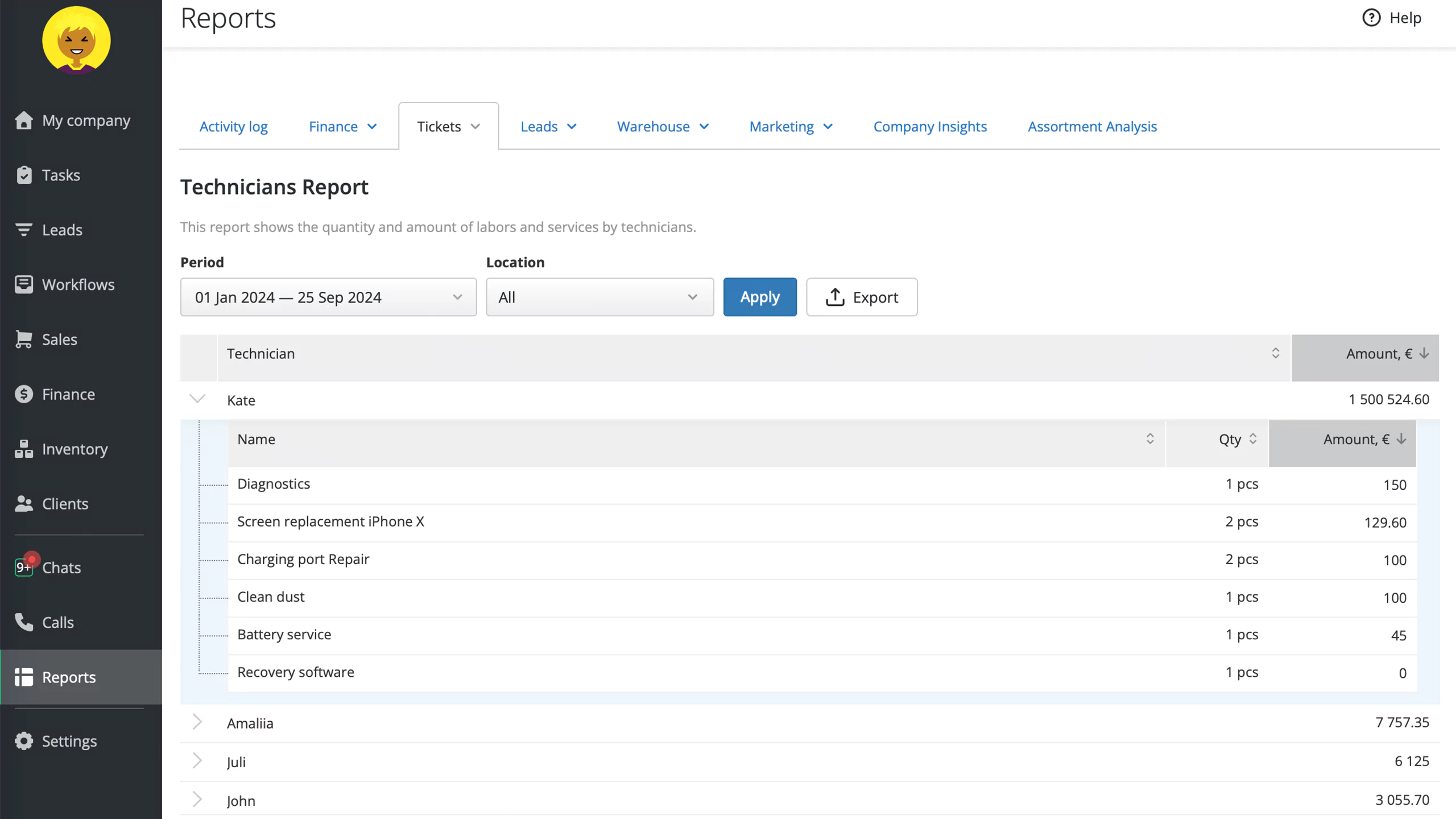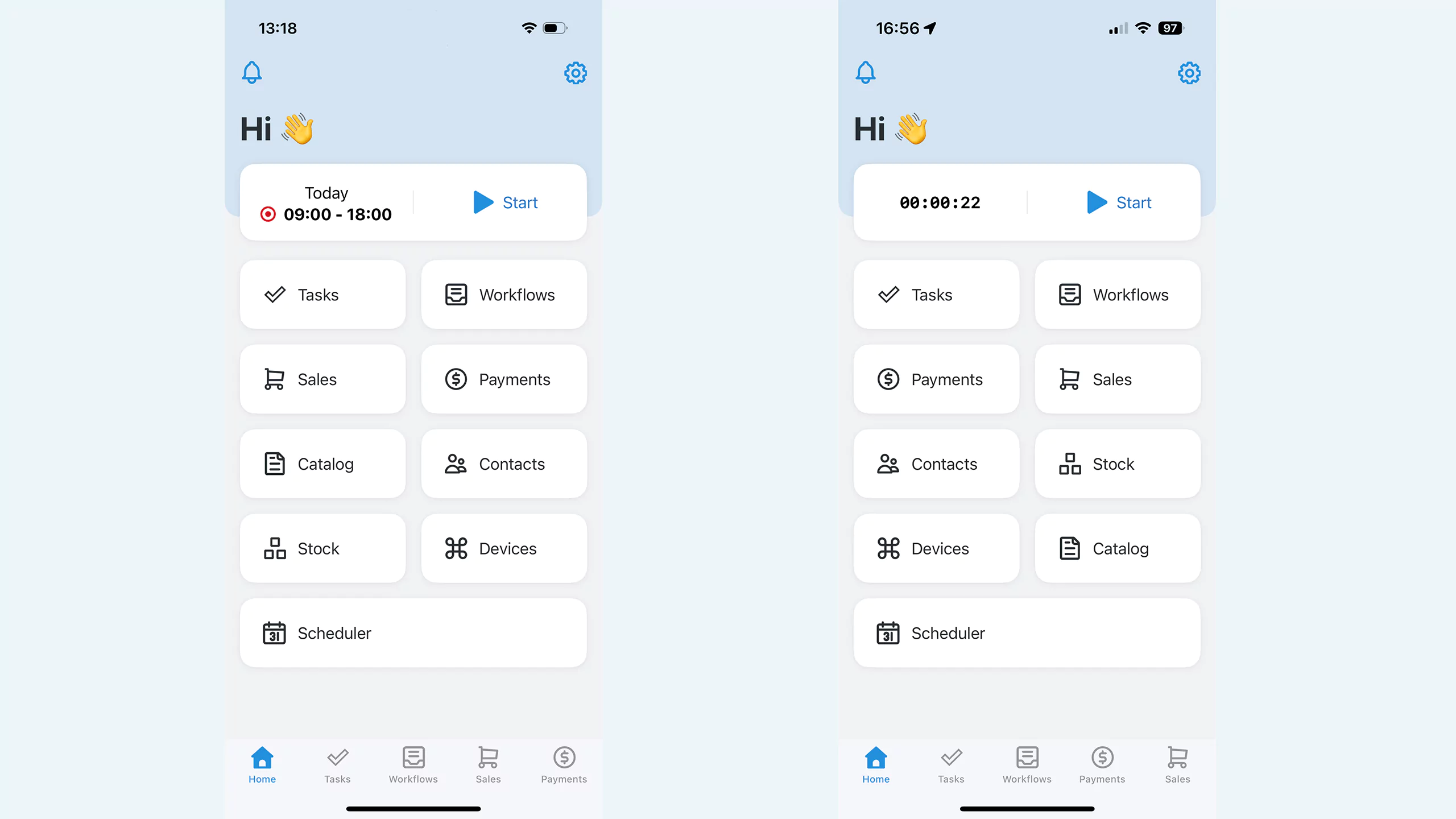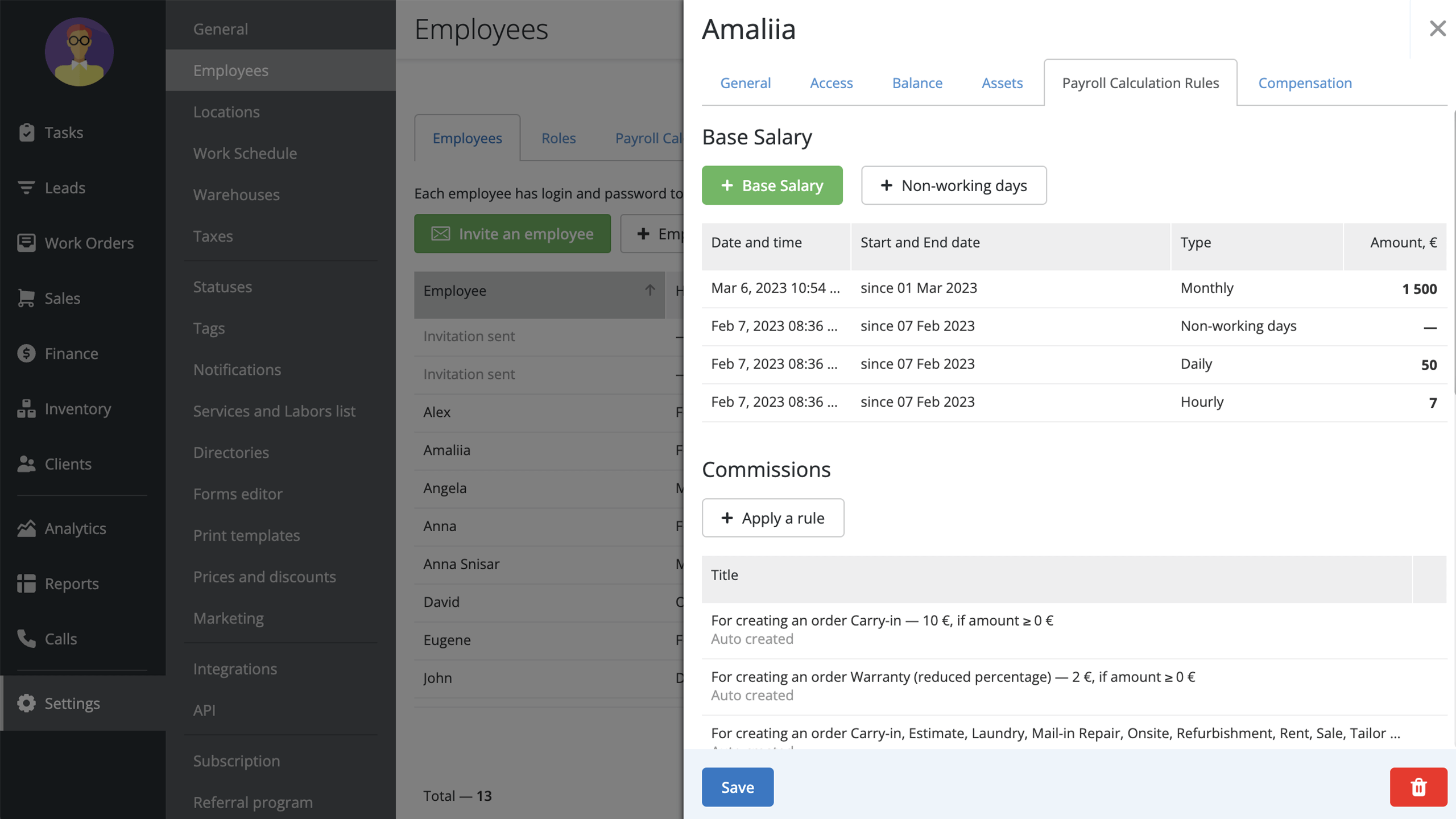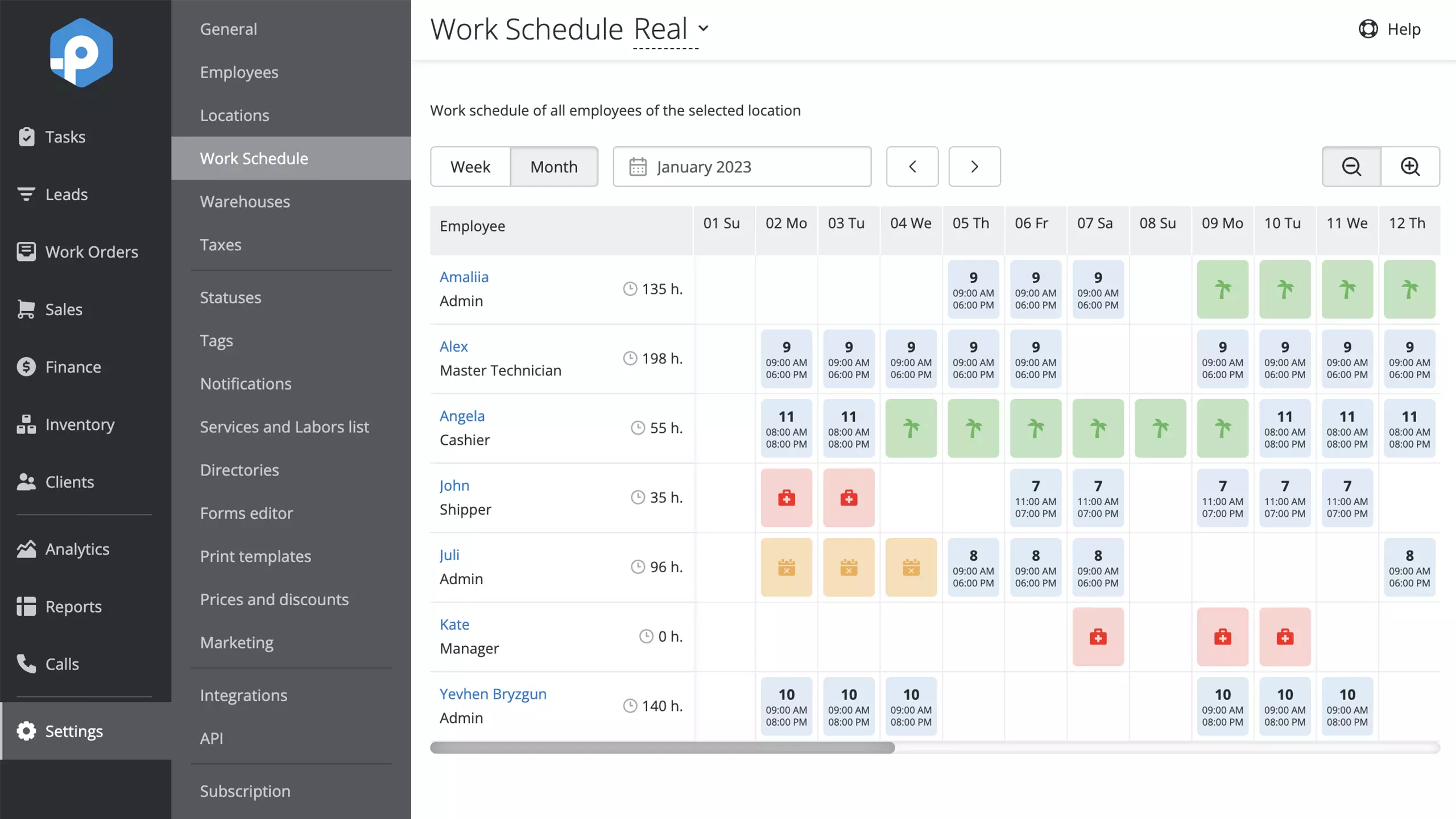Employee Performance KPIs: Guide for Service Businesses
How to manage staff performance with smart KPIs and encourage your team to deliver more results.
Table of Contents
Why Employee KPIs Matter For Productivity And Accountability
Top KPI Categories for Measuring Employee Performance
Employee KPI Examples For Service Businesses
How to Track Employee Performance in Service Businesses [Step-by-Step]
How RO App Helps You Manage Employee Performance
Top 7 Mistakes Service Companies Make When Setting Employee KPI
Frequently Asked Questions About KPI for Employee Performance
Conclusion: Why KPIs Drive Service Team Success
Employee performance metrics are more often associated with IT startups or big corporations where entire departments of analysts work hard on interpreting organisational performance data daily. But this practice fits many business types in the UK well, especially those that provide repair, plumbing, cleaning, electrical, or other services. With a reasonable KPI system, you’ll increase your team's productivity, provide better customer service, and reach your strategic goal. Read further to learn how to design and introduce such a system and what pitfalls to avoid.
Why Employee KPIs Matter For Productivity And Accountability
Staff performance KPIs UK are more than just numbers — they’re essential tools for building high-performing teams. UK Government report on management practices shows that firms with structured performance management are 25% more productive than those without. Employee KPI metrics also help you track progress, spot issues early, and reward outstanding contributions.
Here’s what a good KPI system does for your business:
- Creates Clarity and Alignment: Employees understand what’s expected of them and how their work contributes to broader company goals.
- Enables Ongoing Feedback: Regular reviews turn performance data into meaningful conversations about growth and recognition.
- Fosters Ownership and Motivation: Measurable targets make achievements tangible, inspiring teams to push further.
- Links Daily Work to Strategy: KPIs like job completion rate provided by your service business software or customer satisfaction help translate abstract goals into concrete, trackable actions.
- Builds a Culture of Recognition: Celebrate results tied to clear targets to show your team their efforts matter.
Organise great teamwork in RO App
Three employee accounts are included in all subscription plans. Sign up for a free trial today.
Top KPI Categories for Measuring Employee Performance
There’s no one-size-fits-all set of KPIs. They must be tailored to specific job roles, industry demands, and company goals. The major types of KPI metrics for UK service businesses include:
- Productivity KPIs: Measure work volume and efficiency. Examples include the number of completed tasks, sales closed, or work orders fulfilled. These are essential productivity metrics for employees.
- Quality KPIs: Gauge the standard of work, including accuracy and customer satisfaction. Think error rates, customer feedback scores, or compliance checks.
- Behavioural KPIs: Track consistency and professionalism. These could be attendance, punctuality, teamwork, or adherence to guidelines.
 Technician performance report in RO App
Technician performance report in RO App
Employee KPI Examples For Service Businesses
UK service businesses must rely on tailored metrics that reflect their unique workflows and customer-facing nature. Here are some real-world and department-specific KPI examples for British SMEs:
Technicians:
- Completed work orders: Number of jobs finalised per period.
- Average repair time: Time spent on each job from start to finish.
- Overdue jobs: Work orders not completed within the standard time.
Receptionists:
- Order processing speed: Average time from intake to system entry.
- Complaint resolution: Speed and effectiveness in handling issues.
- Knowledge score: Periodic assessments of product/service knowledge.
Shopkeepers:
- Receiving and putaway productivity: Time taken to process incoming goods.
- Receiving accuracy: Correct match of goods to orders.
- Rate of return: Percentage of defective or returned products.
Shop Assistants:
- Average customer spending: Total sales divided by the number of customers served.
- Cross-selling rate: Number of successful upsells per transaction.
- High-margin goods share: Proportion of sales from premium items.
Department Managers:
- Daily team meetings held: Frequency of updates and coordination.
- Employee turnover rate: Track retention and team stability.
- Performance reviews completed: Ensure regular feedback and growth.
We didn't know what the guys were doing during the day, or what they were using to develop the job. But everything changed for us with RO App. Now, each caulker can manage their own inventory, as items can be assigned to work orders or transferred to other employees.
How to Track Employee Performance in Service Businesses [Step-by-Step]
Creating and executing an effective KPI system requires a structured approach. Here’s how to track employee KPIs in the UK service sector step by step, from setting goals to evaluating outcomes.
- Set Business Objectives
Identify key goals (e.g., increase sales, reduce response time) and break them down into short- and long-term targets. - Define Measurable KPIs
Link employee responsibilities to these goals. For example, if you aim to raise revenue, a relevant KPI might be average customer spend per sales rep. This helps establish measurable employee goals. - Decide on Rewards
Establish a commission structure based on KPI achievement. Tie performance to incentives in a transparent way. - Deliver a Clear Message to Employees
Communicate the new system, expected behaviors, and benefits clearly. Host a team meeting or 1-on-1s for clarity. - Monitor Progress With KPI Tools
Use business dashboard software to track performance and generate reports automatically. - Evaluate KPI Results
Analyse the data. Are goals being met? Adjust for outliers like sick leave or equipment issues. - Fine-Tune Your System
Refine your KPIs periodically based on business needs, employee feedback, and actual results.
How RO App Helps You Manage Employee Performance
Beyond defining and tracking key performance indicators for service teams, having the right tool in place can make all the difference. RO App’s employee management software is designed to help service businesses like yours not just set productivity metrics for employees, but actually manage employees in real-time.
Clock-In / Out Time Tracker
Let employees start and pause their shifts from the web version or work order app — and even select a location if they work across branches.
 Clock-In / Out Time Tracker in RO App mobile app
Clock-In / Out Time Tracker in RO App mobile app
Real-Time Timesheets
Automatically log working hours as employees clock in, or enter/edit them manually if needed. You’ll always have clean, reliable records.
Accurate Payroll Based on Real Hours
The built-in payroll management system allows you to pay by actual time worked, even when shifts change, sick days are worked, or pauses happen mid-day.
 Screenshot of Payroll settings in RO App
Screenshot of Payroll settings in RO App
Compare Planned vs. Actual Hours
The employee scheduling software shows both scheduled and recorded time, helping you manage productivity, absences, and overtime.
 Employee Hours in RO App
Employee Hours in RO App
Real-Time Dashboards
Monitor key performance data like job completion, productivity, sales conversion, employee activity, and customer satisfaction at a glance.
Push Notifications in Mobile App
Employees can receive instant push notifications about events in work orders and tasks, keeping them aligned and responsive while on the go.
Top 7 Mistakes Service Companies Make When Setting Employee KPI
Avoiding common pitfalls is essential for the long-term success of any performance management system. Here are seven frequent mistakes service companies make, and how to fix them.
- Unrealistic Goals: Overestimating capacity can demotivate teams. Set challenging but attainable targets.
- Reduced Take-Home Pay: KPIs to measure employee performance should offer financial incentives, not reduce income. Ensure rewards outweigh previous earnings.
- Double Standards: Employee performance management metrics must apply equally across roles and departments to avoid resentment.
- Uncontrollable Indicators: Don’t assess employees on metrics outside their influence (e.g., total monthly sales if they don’t handle pricing).
- Lack of Transparency: KPI calculations must be easy to understand. Create a simple cheat sheet.
- Overloading with Metrics: Limit KPIs to the top 5–7 that matter most. Too many create confusion.
- No Transition Period: Give employees time to adapt. Offer training, system walkthroughs, and trial periods.
Low employee morale? Try these staff morale booster ideas.
Frequently Asked Questions About KPI for Employee Performance
What solution can I use to track technician performance UK?
RO App offers a comprehensive tool for monitoring and automating employee KPIs for UK service companies. From payroll automation to real-time performance insights, it’s designed to streamline employee evaluation and incentivise excellence.
What are performance management systems?
Performance management systems are structured processes or digital tools used to set goals, track progress, and evaluate employee outcomes. These systems help businesses align team performance with strategic objectives, provide feedback, and inform compensation or training. Tools like RO App serve as performance management systems tailored for the service industry, enabling real-time tracking of employee KPIs, time management, and productivity.
What employee KPIs should business leaders measure regularly?
Company owners and team leaders should focus on KPIs that align directly with their goals, including productivity, customer satisfaction, sales conversion rates, and employee engagement. These indicators help track overall effectiveness and guide decision-making.
What solution can I use to track employee KPIs in my repair shop?
RO App offers a comprehensive tool for monitoring and automating KPI tracking. From payroll automation to real-time performance insights, it’s designed to streamline employee evaluation and incentivize excellence.
Conclusion: Why KPIs Drive Service Team Success
Employee performance KPIs are a powerful way to align employee efforts with company goals. By applying best practices, monitoring progress with the right tools, and avoiding common pitfalls, you can motivate your team, improve accountability, and make smarter business decisions.




